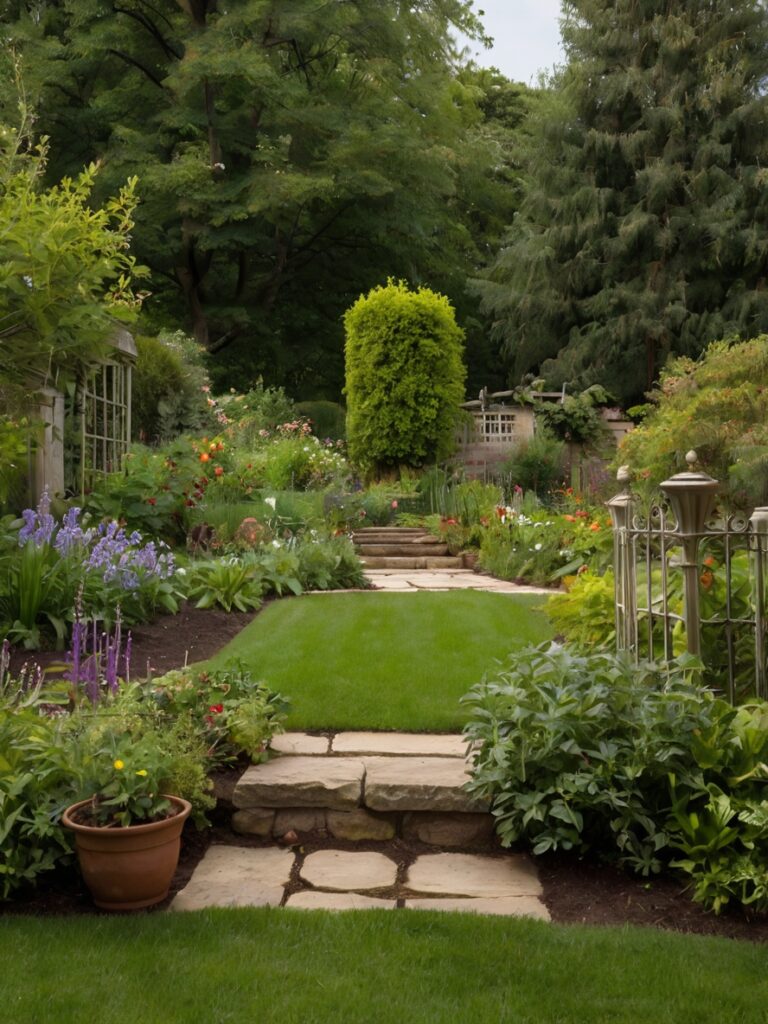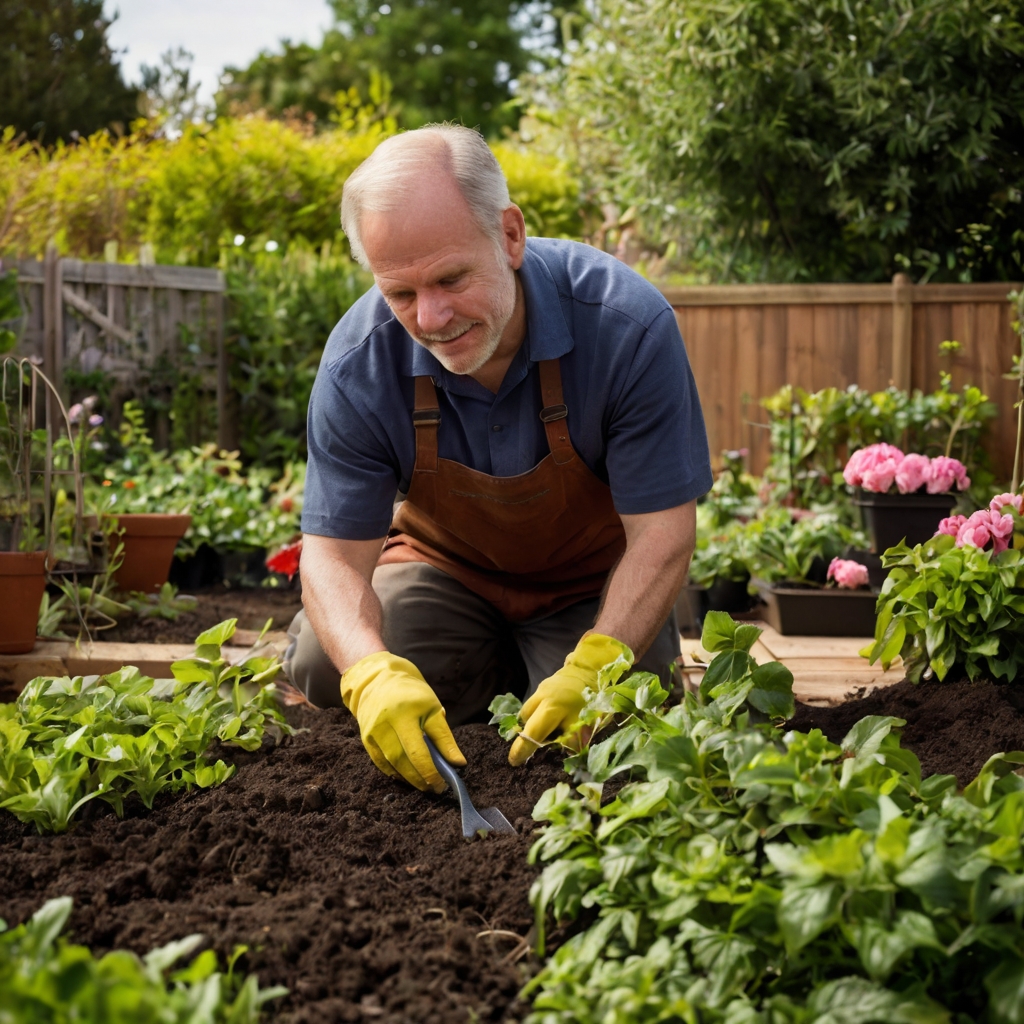Little gardening. Gardening is a rewarding and relaxing hobby that anyone can enjoy, whether you have a large backyard or just a small balcony. For those with limited space, little gardening is the perfect solution. With the right techniques and tools, you can grow plants, flowers, and even vegetables in small areas. From urban gardens on a rooftop to container plants on a windowsill, little gardening is all about making the most of your available space.
In this guide, we’ll explore what little gardening is, the benefits it offers, and how you can start your own little garden, no matter how much space you have. We’ll also share practical tips for plant selection, tools, and maintenance to help you succeed in your gardening journey.
What is Little Gardening?
Little gardening refers to growing plants in small or limited spaces, such as apartments, balconies, windowsills, or compact outdoor areas. It’s a gardening method designed for people who don’t have large yards or expansive outdoor areas but still want to enjoy the beauty and benefits of plants.
Whether you’re growing herbs on your kitchen counter, setting up potted plants on a small patio, or creating a vertical garden on a balcony, little gardening focuses on maximizing small spaces for plant growth.
Benefits of Little Gardening
Little gardening offers numerous benefits, both for your home and well-being. Here are some reasons why you should consider starting your own small garden:
- Improves Mental Health: Spending time around plants has been proven to reduce stress and anxiety. Little gardening offers a peaceful, mindful activity that allows you to unwind after a busy day.
- Fresh Produce: Even with limited space, you can grow fresh herbs, vegetables, and fruits. Having access to homegrown produce saves money and ensures you’re eating healthy, pesticide-free food.
- Enhances Air Quality: Plants help purify the air by absorbing carbon dioxide and releasing oxygen. Indoor plants, in particular, can improve the air quality in your home.
- Aesthetic Appeal: Plants add a touch of beauty and nature to any space. Whether you have a single potted plant or a small garden on your balcony, little gardening can transform your living area into a green oasis.
- Easy Maintenance: Unlike large gardens, little gardens are easy to manage and maintain. You don’t need to spend hours every day tending to plants—just a few minutes of care can go a long way.
How to Start a Little Garden: Step-by-Step Guide
Starting a little garden may seem daunting, but with some planning and preparation, it’s quite simple. Here’s how to get started:
1. Choose the Right Space
The first step in starting your little garden is to find the right location. Depending on the space available, this could be:
- A sunny windowsill.
- A balcony or patio.
- A small corner in your backyard.
- Vertical space on a wall (for hanging or vertical gardens).
It’s essential to choose a spot that gets enough sunlight, as most plants need at least 4-6 hours of sunlight a day to grow well. If your space doesn’t get much direct sunlight, you can consider growing shade-tolerant plants or use grow lights.

2. Select the Right Containers
In little gardening, containers are your best friends. You can grow plants in pots, containers, or even hanging baskets. When choosing containers, consider the following:
- Size: Make sure the container is large enough for the plant’s roots to grow.
- Drainage: Containers must have drainage holes to prevent water from pooling and causing root rot.
- Material: Choose containers made from durable materials like plastic, clay, or ceramic. Plastic containers are lightweight and affordable, while ceramic and clay pots offer a more aesthetic appeal.
If you’re short on space, consider using vertical gardening techniques, such as stacking containers, hanging pots, or using tiered plant stands to maximize your growing area.
3. Choose the Right Soil
Using the right soil is essential for healthy plant growth. For container gardening, it’s best to use potting mix instead of regular garden soil. Potting mix is lighter and provides better aeration and drainage for plants. You can also add compost or organic fertilizers to enrich the soil and provide essential nutrients.
4. Pick the Right Plants
Choosing the right plants is key to a successful little garden. For beginners, it’s best to start with low-maintenance plants that are easy to care for. Here are some great plant options for small-space gardening:
- Herbs: Basil, mint, parsley, rosemary, thyme.
- Vegetables: Lettuce, spinach, cherry tomatoes, peppers, radishes.
- Flowers: Marigolds, petunias, pansies, succulents.
- Indoor Plants: Snake plants, spider plants, pothos, peace lilies.
If you’re working with a limited amount of sunlight, choose plants that can thrive in partial shade, such as ferns or hostas.
5. Watering and Maintenance
One of the key aspects of gardening is watering your plants properly. Containers dry out faster than garden beds, so it’s important to check your plants regularly and water them when needed. Most plants prefer moist but not waterlogged soil, so ensure that the containers drain well.
Here are some tips for maintaining your little garden:
- Water in the morning to allow plants to absorb moisture before the heat of the day.
- Fertilize regularly to provide nutrients for healthy growth. Use organic or slow-release fertilizers to avoid overfeeding.
- Prune and deadhead your plants to encourage new growth and keep them looking tidy.
- Watch for pests: In small gardens, pests can quickly become a problem. Keep an eye out for common pests like aphids or spider mites, and treat them with natural remedies like neem oil.
Creative Ideas for Little Gardening
Little gardening is all about creativity and making the most of small spaces. Here are some fun and innovative ideas to inspire your small-space garden:
1. Vertical Gardens
Vertical gardening is a great way to maximize space, especially if you have a small balcony or patio. You can create a vertical garden using hanging pots, stacked containers, or a trellis. Vertical gardens are ideal for growing herbs, flowers, and even small vegetables like cherry tomatoes or cucumbers.
2. Window Boxes
If you have a sunny window, consider adding a window box for growing herbs or flowers. Window boxes are a beautiful way to bring greenery into your home and are perfect for small spaces.
3. Hanging Baskets
Hanging baskets are perfect for trailing plants like ivy, petunias, or strawberries. They add greenery to your outdoor space without taking up any floor space.
4. Repurposed Containers
Get creative by using repurposed containers for your plants. Old buckets, wooden crates, or even teapots can be turned into charming plant pots. This not only adds a personal touch to your garden but also helps reduce waste.
5. Indoor Herb Garden
If you have limited outdoor space, you can create a mini herb garden in your kitchen. Herbs like basil, cilantro, and thyme thrive in small pots and can be grown indoors with proper light and care.
Sustainability in Little Gardening
Little gardening can also be an eco-friendly practice that helps reduce your environmental footprint. Here are a few sustainable gardening tips to keep in mind:
- Use organic fertilizers and compost to nourish your plants naturally.
- Collect rainwater in small barrels or containers to water your plants and reduce water waste.
- Reuse and repurpose containers instead of buying new ones.
- Grow your own food: Even in a little garden, you can grow vegetables and herbs that reduce the need to buy produce packaged in plastic.
Common Mistakes to Avoid in Little Gardening
While little gardening is relatively simple, there are some common mistakes beginners should avoid:
- Overwatering: It’s easy to overwater plants in containers. Make sure your pots have good drainage, and only water when the soil is dry to the touch.
- Using the Wrong Soil: Regular garden soil is too dense for container plants. Always use potting mix for better results.
- Not Enough Light: Ensure your plants get enough sunlight. If your space is shaded, choose shade-tolerant plants.
- Neglecting Pruning: Regularly prune and deadhead your plants to promote healthy growth and prevent overcrowding in small spaces.
Conclusion
Little gardening is a wonderful way to bring nature into your home, even if you have limited space. With the right plants, containers, and care, you can create a thriving garden on your balcony, windowsill, or patio. Whether you’re growing herbs, vegetables, or decorative plants, little gardening offers countless benefits for your health, home, and the environment.
By following the tips and ideas in this guide, you’ll be well on your way to starting your own little garden. Not only will it beautify your space, but it will also bring you joy and relaxation as you watch your plants grow.


You might also like
Uncategorized
Honey Roasted Carrots with Garlic, Lemon, and Thyme: A Perfectly Sweet and Savory Side Dish
Uncategorized
Crispy Homemade French Fries Recipe — Golden, Crunchy, and Irresistible!
Uncategorized
Homemade Goldfish Crackers: A Fun and Cheesy Snack You’ll Love